Endeavour at the California Science Center
When I last saw Orbiter Endeavour, she was sitting in High Bay 3 of the Vehicle Assembly Building at the Kennedy Space Center. We were taking our first tour of the VAB since 1970, as the VAB had been closed to the public for the entire duration of the Shuttle Program. Now, withe the program retired, the VAB was open again, and Endeavour was awaiting her ride on the SCA out to her new home in Los Angles.
A lot of people were not pleased withe the NASA decision to place one of the three remaining Orbiter is California, but in retrospect, it was important to do so, and Endeavour was the right bird for the job.
People have forgotten that all of the Shuttle Orbiters were built in California, at the Rockwell International plant in Palmdale. Her Main Engines were the work of Rocketdyne in Canoga Park, which was originally a division of Rockwell, but is now part of the Pratt & Whitney family. The big carbon-fiber Payload Bay Doors came from the old McDonnell-Douglas Aerospace Division. Other Shuttle parts came from many other suppliers outside of California, but they all came to Palmdale, to become the Orbiters.
California is also home to the Dryden Flight Research Center at Edwards Air Force Base in the Mojave Desert. The Shuttle Columbia made the first-ever landing there, and all other Orbiters made their first-flight landings there as well, using the vast margins of the lake-bed runway as a buffer in case of problems. Dryden also served as a back-up landing site, if weather forced the Shuttle away from the landing strip at KSC. The Shuttle Carrier Aircraft (SCA) was based out of Dryden.
After Challenger was lost in 1986, the effort to replace her began. The structural spares that NASA had accumulated were culled together to begin the build. A contest was held with school children across America to choose a name for the replacement Shuttle, and Endeavour was picked. She was the last Space Shuttle Orbiter to be built, the youngest of the fleet. Her new display home is now in California, where her life and those of all the Orbiters began.
So, we came to California as well. Mostly to see my children and grandchildren, but also for all of us to pay Endeavour a visit. Her new home right now is a temporary structure, protecting Endeavour and her visitors from the California heat. She is resting on the transport cradle, used to take all assembled Shuttle Orbiters from Rockwell-Palmdale to Edwards Air Force Base, now resting on specially designed support blocks which will protect her from earthquakes. However, she will not stay horizontal forever. Within four years, by 2017, the CSC plans to build a new display for Endeavour, placing her onto a replica of the full Shuttle stack - Solid Rocket Boosters and External Tank, stacked vertically, just as she would be awaiting launch.
I will have to return to see that...
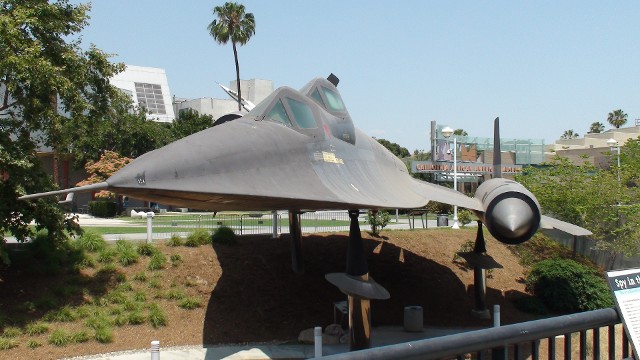
The CIA/Air Force A-12, forerunner to the SR-71 Blackbird and YF-12A interceptor.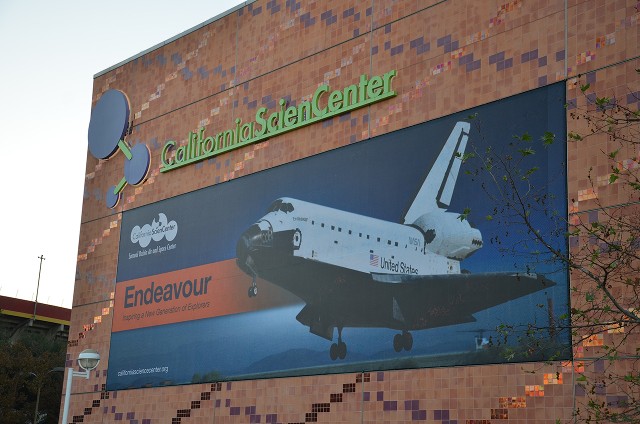
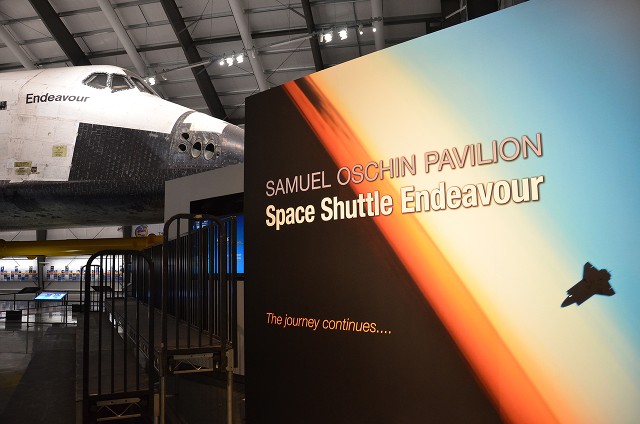
All right... Let's go in! (Picture without crowds of people courtesy of CollectSpace.com)
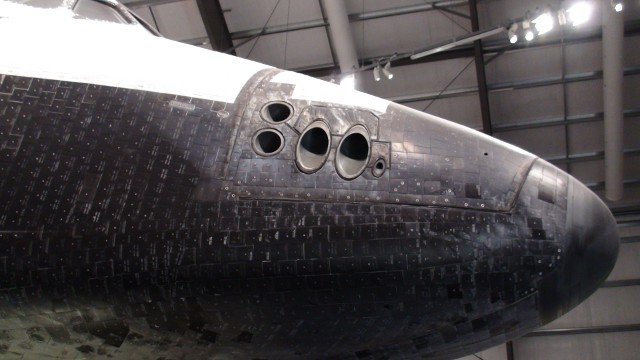
The first view of Endeavor when you come into the pavilion. Up close and personal.
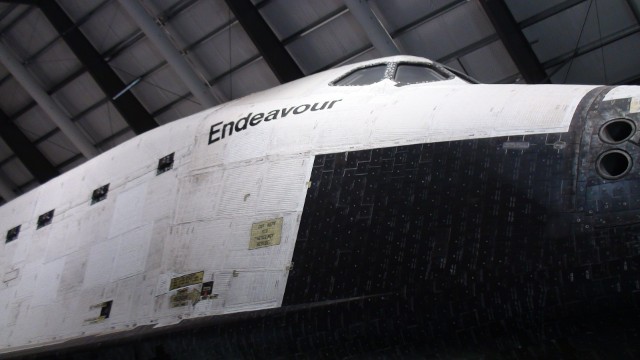
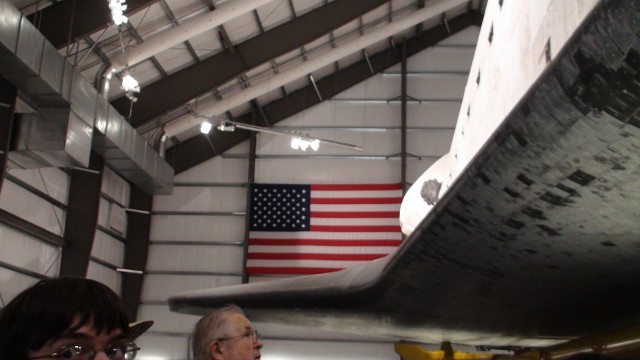
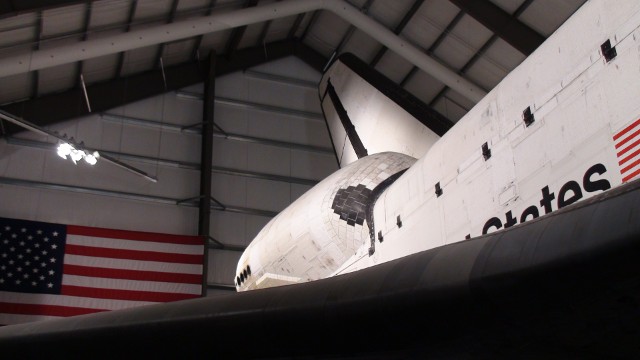
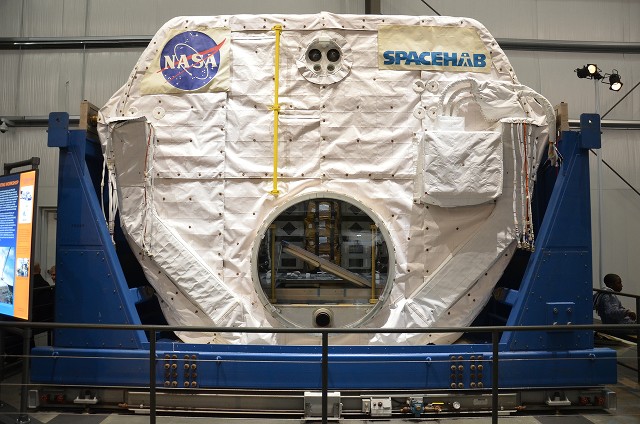
A Spacehab module, used to fly orbital science missions in the payload bay. (Photo courtesy of Collect Space.com)
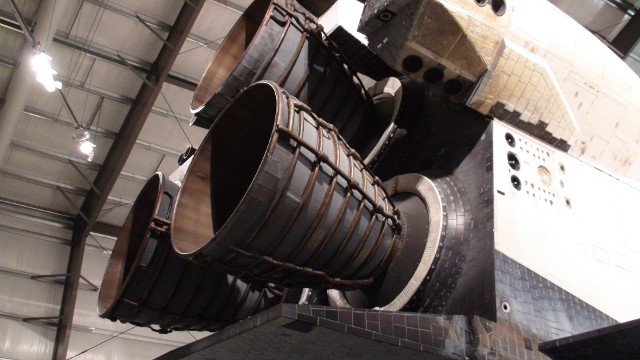
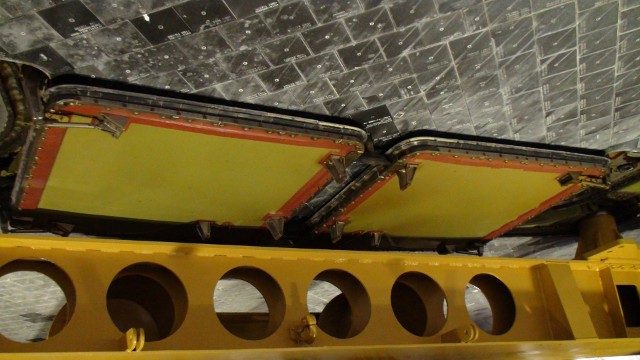
The ET Umbilical Doors, held open by the Centerline Latches.
Port side door, and the Liquid Hydrogen (LH2) inlet.
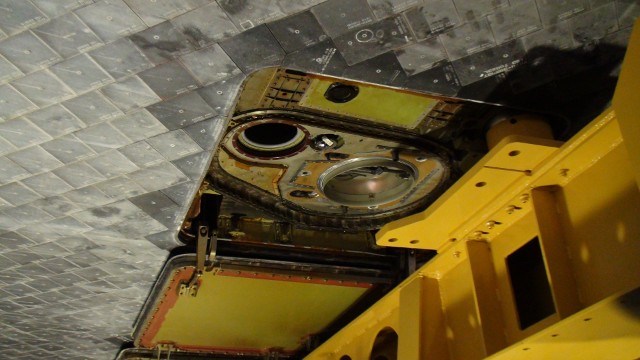
Starboard side door, and the Liquid Oxygen (LOX) inlet.
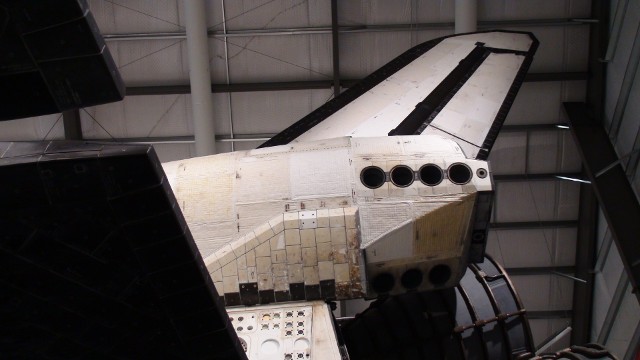
Port OMS Pod and RCS cluster.
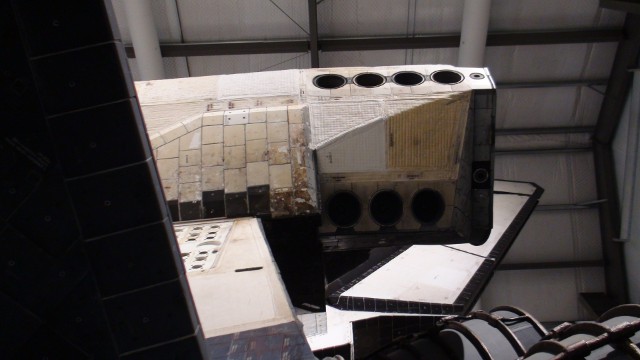
Detail of the RCS cluster.
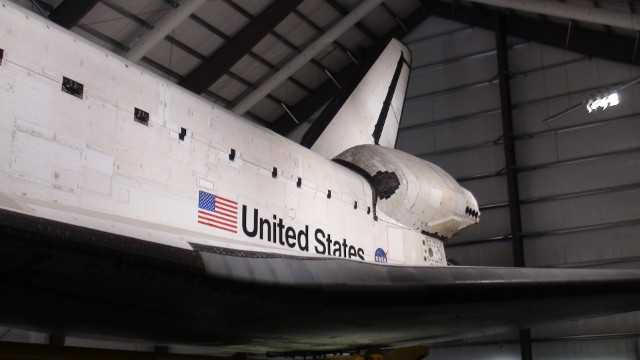
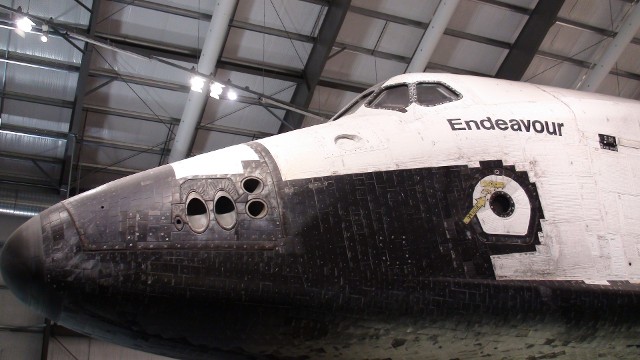

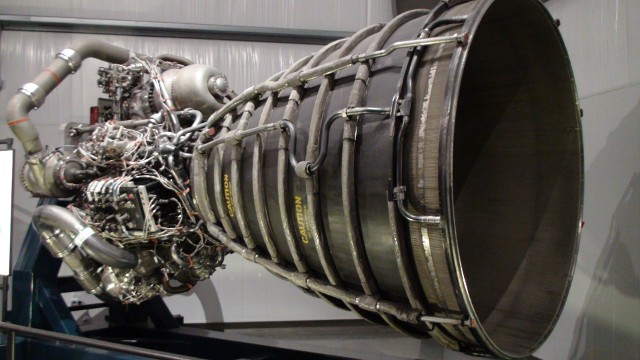
Rocketdyne Space Shuttle Main Engine. This was a test & certification engine, but an actual SSME all the same. All of the flight engines from all three Orbiters are now at Stennis Space Center in Louisiana to be commissioned for use on the new SLS Booster.
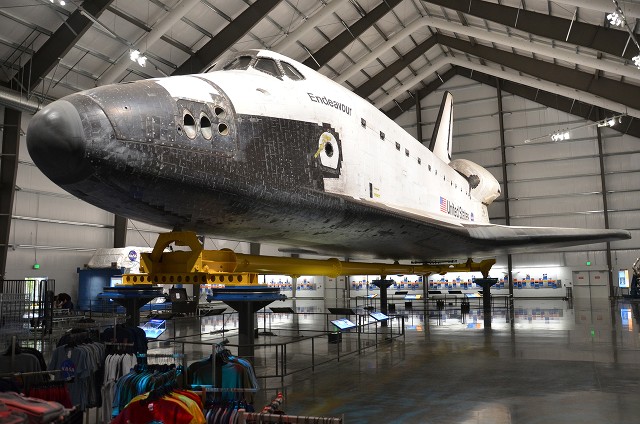
Wide angle shot, courtesy of Collect Space.com. My "wide angle" was not quite this wide...
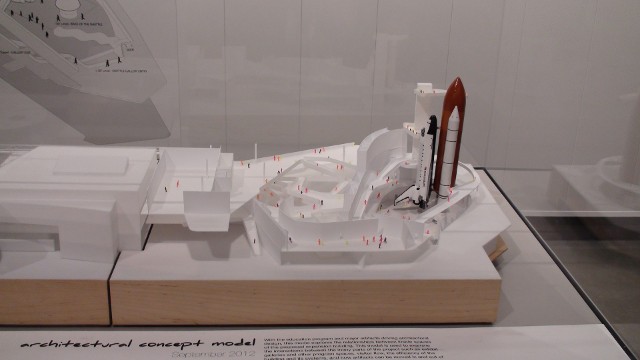
An architect's model of the final Endeavour exhibit, with the vehicle mounted vertically, as awaiting launch. The completion of this display in 2017, and the one now planned for Space Center Houston, will allow the public to remember the Shuttle in all four familiar flight modes.
This display will have the Shuttle waiting to launch.
The Atlantis display at KSC shows the Shuttle as it looked in orbital flight with the payload bay doors open and arm extended.
The Discovery display at Udvar-Hazy has the Shuttle after re-entry and landing.
Finally, the combined hi-fidelity Orbiter mock-up (was called Explorer) from the Kennedy Space Center and the NASA 905 Shuttle Carrier Aircraft (SCA) stacked together will be opened in Space Center Houston and will show the Shuttle being ferried from point to point across the Earth. The Houston display will be the largest aviation exhibit of any kind in the world. It will provide access to the interiors of both the 747 and the Orbiter.
I'd love to return to California to see the work on Endeavour's new display as it nears completion. We'll have to see how that goes...
Late breaking news... Extrnal Tank ET-94, last of the flight-qualified Shuttle External Tanks, is going to be sent to California for use in the CSC's vertical Shuttle stack display. Even though its longer than the Orbiter Endeavour, the ET's trip from port to the CSC through the streets of LA will not be as hazardous as Endeavour's, since the width is only 27 feet, instead of the 78-foot wingspan of the Orbiter. Should still be quite a sight...
For complete phot journal of the Endeavour visit, Click Here to go to the Shutterfly Share Site.